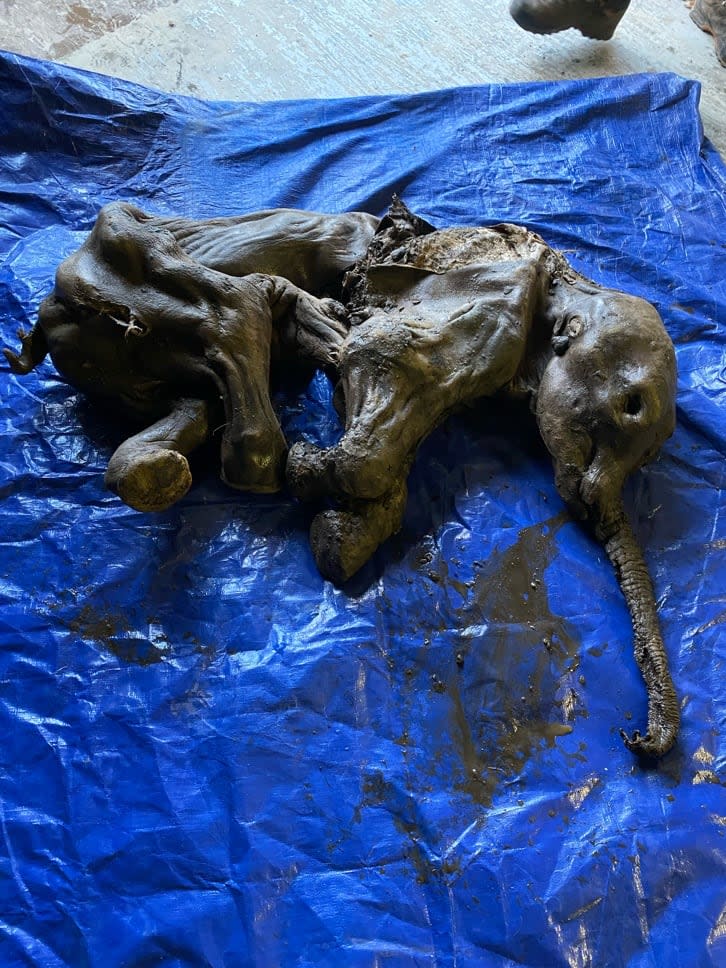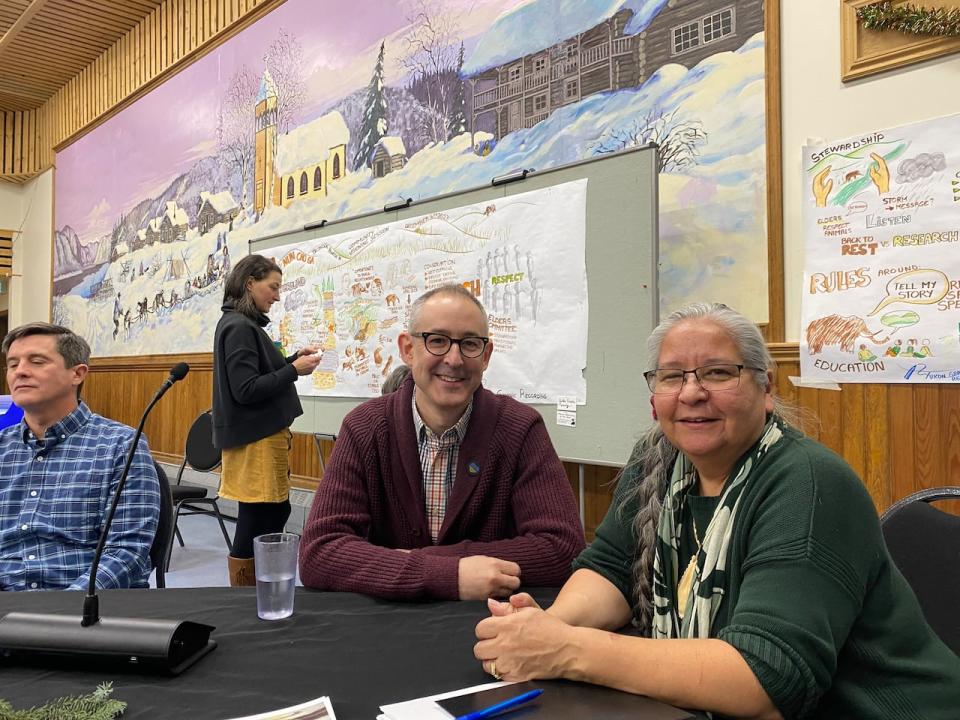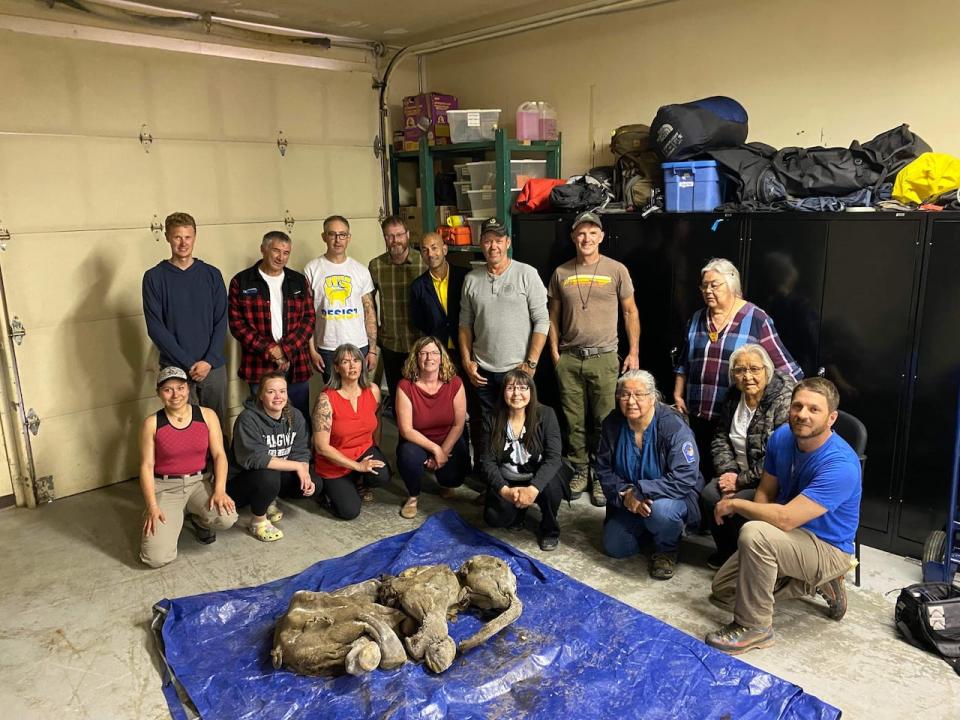Long-term plan in the works for baby mammoth found last year in Yukon

Nun cho ga, the baby wooly mammoth whose extraordinarily preserved remains caused a sensation after they were dug up by a miner near Dawson City, Yukon, last year, could soon be heading to Ottawa — at least for a period.
The rare specimen — believed to be about 30,000 to 35,000 years old — has been stored in a walk-in freezer in Dawson City since its discovery. Now, the plan is to send it to the Canadian Conservation Institute in Ottawa to learn more about it.
"We need to preserve her. We need to respect her, and that's in the plans — and we're venturing down that road by taking her down to Ottawa," said Debbie Nagano, heritage director with the Tr'ondëk Hwëch'in First Nation in Dawson City.
The Canadian Conservation Institute is a federal agency that specializes in the preservation and conservation of things with heritage value. The Tr'ondëk Hwëch'in has submitted an application for Nun cho ga — "big animal baby" in the Hän language — to undergo conservation treatment.
The animal was deemed to be the first whole baby mammoth to be found in North America, and the second in the world. It was found on Tr'ondëk Hwëch'in lands and the First Nation is taking the lead in determining what happens with it.
Nagano say it's important to figure out the best way to tell and share Nun cho ga's story, within her community and to a wider public. On Tuesday, a community meeting was held in Dawson City to talk about it.
"How do we teach our teachings at the same time with Nun cho ga? It's land development, it's guardianship, it's stewardship — and the list goes on," Nagano said.
Grant Zazula, a Yukon government paleontologist, says there are a lot of questions still to be answered about Nun cho ga as a scientific find. Yukon miners are routinely digging up fossils, bones and mammoth tusks, but this was a remarkably complete specimen.
"This is an animal that's extinct. It used to roam the hills of Dawson City and is no longer here. And there's questions about why she's no longer here. You know, why don't we have mammoths anymore? How did this mammoth live?" Zazula said.

Yukon government paleontologist Grant Zazula, with Debbie Nagano, heritage director with the Tr'ondëk Hwëch'in First Nation, at a community gathering in Dawson City on Tuesday, to discuss plans for Nun cho ga. (Chris MacIntyre/CBC)
He said X-rays and CT scans may help answer some questions about this particular animal. It's not certain how Nun cho ga died, how old it was, or even whether it's male or female.
"We've all been referring to her as 'she,' but on a baby elephant or baby mammoth it's actually very tough to tell," Zazula said.
'This mammoth has brought these communities together'
Then there are other, deeper questions about the animal's cultural and spiritual significance, Zazula said. Speaking about the animal's discovery last year, the paleontologist speaks in almost mystical terms.
"Everyone that's spent any time around Nun cho ga has been deeply emotionally impacted and spiritually impacted. And we feel that this mammoth has brought these communities together — the Tr'ondëk Hwëch'in, the Yukon government, scientists, the gold miners," Zazula said.
"It's a being that has a spirit. So we're trying to learn her story. Why was she there? What was she? How was she living? How does she die? And why is she here now? Why did she appear on June 21st of last summer?"

Trʼondëk Hwëchʼin citizens and representatives of the Yukon government, Treadstone Mine and University of Calgary pose with Nun cho ga after the animal was discovered in June 2022. (Yukon government)
Zazula calls the animal "a real gift," as it offers a chance to bring science and Indigenous traditional knowledge together in new ways.
"We're trying to use this as an opportunity for teaching and healing and self-reflection, and how to do science and traditional ways of knowing in different ways, and how to bring that together," he said.
"And that's really powerful."
Nagano echoed Zazula's suggestion that there's a deeper meaning and significance to Nun cho ga's appearance at this point in her community's history.
"It's almost like a symbolic spirit that came at the right time, and we're going to use it as a vessel to push through — to regain our culture, our protocols back. It's time to come together in a good way," she said.
Nagano said her First Nation will be deeply involved in Nun cho ga's transport to Ottawa, to ensure that proper traditions and ceremonies are observed.
Eventually, the animal will be returned to Dawson City but the First Nation has not decided what will happen with it then.

